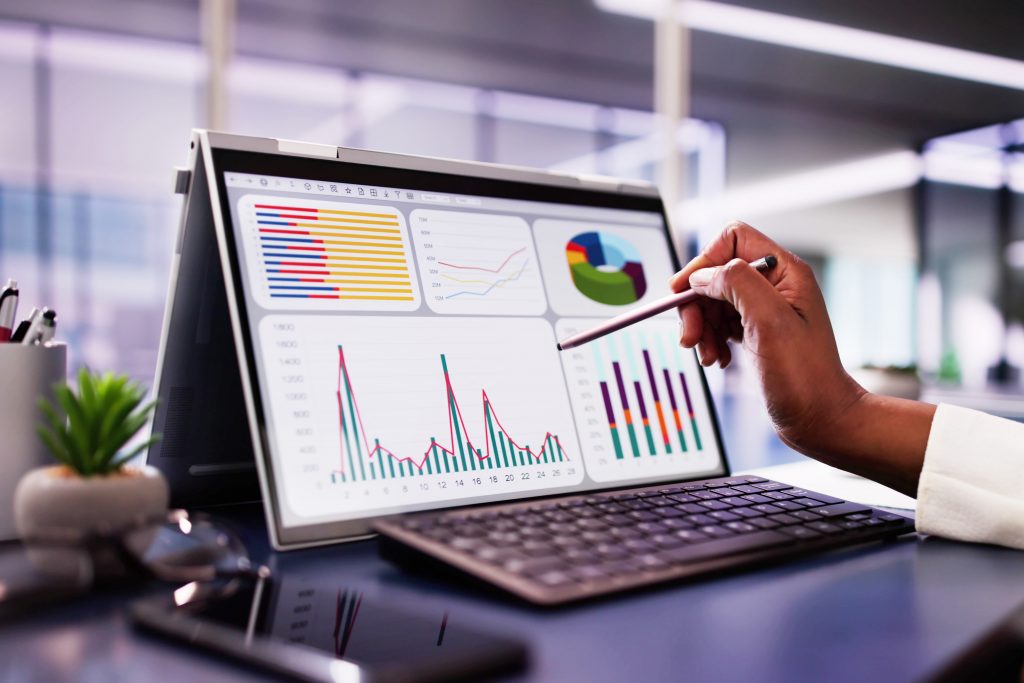Retail analytics directly contribute to understanding challenges of in-store retail sales — transforming how retailers understand their customers, optimize operations and drive business growth. With data playing a crucial role in decision-making, businesses often ask what benefits retail analytics can deliver and how to get started. Below, we answer seven commonly asked questions about retail analytics — and highlight how Walkbase helps retailers leverage data for measurable success.
1. What is retail data analytics?
Retail data analytics involves collecting, analyzing and interpreting data from retail environments to uncover actionable insights. This data includes customer behavior, sales performance and operational efficiency, allowing retailers to make informed decisions. There are several ways to gain retail data analytics, with simple solutions such as door counters, to more complex sensor-based technology, which provides much deeper insights to act on. The more analytics you’re gathering to complement your POS data and data from ecommerce, the better your store will operate and provide an enhanced customer experience.
Walkbase uses advanced sensor technologies, including Bluetooth and millimeter wave, to gather highly accurate data on in-store traffic, occupancy and shopper behavior. These insights help retailers optimize operations, improve store layouts and enhance the overall shopping experience.
2. What is shopper behavior?
Shopper behavior refers to the actions and decisions customers make while shopping, such as which areas they visit, how long they stay and what products they buy or avoid. Do shoppers as a whole tend to dwell in certain areas? With advanced sensor-based tracking, shopper behavior may mean where an anonymized or a “known” loyalty shopper frequents but does not purchase. Understanding shopper behavior enables retailers to tailor their offerings to meet customer needs more effectively.
Walkbase sensors capture critical shopper behavior data, including pathing, dwell time and engagement with specific displays or areas, with up to a 120 degree field of view and 20 foot range. These insights allow retailers to improve merchandising strategies, optimize store layouts and increase conversion rates.
3. What are the different types of shopping behavior?
Shopping behavior can typically be categorized into four main types:
-
Impulse Buying: Unplanned purchases made on the spot.
-
Habitual Buying: Routine purchases of familiar products.
-
Research-Oriented Buying: Customers seeking information before purchasing.
-
Discount-Driven Buying: Purchases motivated by deals or promotions.
Walkbase’s analytics solutions help retailers identify these behaviors by tracking customer movement, dwell time and purchase patterns. By understanding how customers interact with the store, retailers can adjust promotions, product placement and advertising to better align with shopper behavior. Retailers can also better align in-store retail media networks with shopping behavior, leading to increased awareness, engagement and interest in the media network partner.
4. What is footfall analysis?
Footfall analysis measures the number of customers entering, exiting and moving through a retail space. It provides valuable insights into store performance, customer flow and peak shopping times.
Walkbase offers footfall analysis with 99% accuracy using advanced sensor technology. This data helps retailers optimize staffing levels, improve customer service and tailor store operations to meet demand. By understanding occupancy trends, retailers can ensure they have the right resources in place to deliver a seamless shopping experience.
Footfall analysis also directly improves planograms. By simply analyzing the passersby and dwell of an area of the store, a promotional static or digital display message can be tested, moved and tested again, leading to optimized engagement.
5. What is in-store analytics?
In-store analytics involves analyzing data collected within a physical store to understand customer behavior, store performance and operational efficiency. It includes metrics like dwell time, traffic patterns and conversion rates.
Walkbase’s in-store analytics solutions provide a detailed view of how customers interact with the store environment. Retailers can use these insights to:
- Enhance merchandising decisions (e.g., placing high-margin products on high-traffic end caps).
- Improve store layouts to guide customer flow and maximize sales opportunities.
- Optimize staffing to match peak traffic times.
6. How is data analytics used in retail?
Data analytics is used in retail to drive decision-making across various areas, including merchandising, marketing, innovation, customer experience and operations. Specific uses include:
-
Measuring Retail Media ROI: Linking in-store ads to customer engagement and purchase behavior.
-
Enhancing Merchandising: Placing popular or high-margin products in areas with the most foot traffic.
-
Improving Store Operations: Adjusting staffing levels to meet customer demand and avoid under- or overstaffing.
-
Refining Store Layouts: Optimizing product placement to improve flow and increase sales.
-
Creating Experiential Shopping Experiences: Understanding popular areas of the store and enhancing the zone with highly engaging promotions, video walls, displays or interactive experiences.
Walkbase enables retailers to achieve these goals by providing actionable, real-time insights through advanced data collection and analysis technologies.
7. What is the primary goal of retail analytics?
The primary goal of retail analytics is to provide actionable insights that drive business growth, improve store efficiencies, increase automation and enhance the customer experience. By leveraging data, retailers can make smarter decisions that lead to increased sales, better operational efficiency and improved customer satisfaction.
Walkbase supports this goal by delivering accurate, privacy-centric analytics that help retailers:
- Understand shopper behavior and preferences.
- Optimize store operations and staffing.
- Improve merchandising and advertising strategies.
- Maximize ROI for in-store campaigns.
With Walkbase’s intuitive dashboard, retailers can access clear, actionable insights in real time that empower them to deliver exceptional shopping experiences and drive measurable results.
Unlock the Power of Retail Analytics With Walkbase
Retail analytics is a game-changer for businesses looking to understand their customers, improve operations and drive growth. Walkbase’s advanced analytics solutions provide the tools you need to unlock these opportunities — from footfall analysis with 99% accuracy to actionable insights on shopper behavior and store performance.
